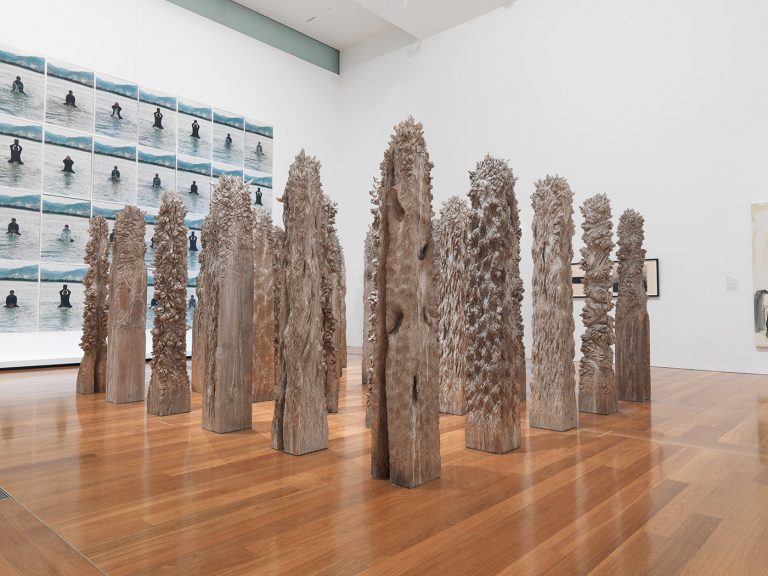We acknowledge the Traditional Owners of the land on which the Queensland Art Gallery | Gallery of Modern Art stands and recognise the creative contribution First Australians make to the art and culture of this country.

Shigeo Toya / Japan b.1947 / Woods III 1991–92 / Wood, ashes and synthetic polymer paint / 30 pieces: 220 x 30 x 30cm (each, irreg., approx.); 220 x 530 x 430cm (installed) / The Kenneth and Yasuko Myer Collection of Contemporary Asian Art. Purchased 1994 with funds from The Myer Foundation and Michael Sidney Myer through the Queensland Art Gallery Foundation and with the assistance of the International Exhibitions Program / Collection: Queensland Art Gallery | Gallery of Modern Art / © Shigeo Toya
Shigeo ToyaWoods III 1991–1992
Not Currently on Display
Woods III examines our connection with the landscape by reminding us of our experience of being amongst the trees in nature.
Shigeo Toya has created multiples of a simplified tree form, arranged in a grid like pattern, to recreate the atmosphere of a forest. His use of a chainsaw to roughly carve and splinter the wooden posts draws our attention to the place of trees in the cycle of life.
Shigeo Toya graduated from Aichi Prefectural University of Fine Arts in 1975. Artists of his generation immediately succeeded the important Japanese art movement known as Mono-ha (School of Things).
Mono-ha rejected the prevailing conventions of Western style expressionism in painting and sculpture in favour of an unconditional acceptance of the world as it is. In turn, Toya rejected the strict literalism of his predecessors.
Toya’s rendering of the landscape and his personal links to it use technique and form to reference the strength and resilience of the natural world, as well as its inherent violence.
Discussion Questions
1. How does the rough carving of the trees contribute to the aesthetic quality of the work?
2. Why has the artist positioned the trees in a grid rather than in a less structured arrangement?
Classroom Activities
1. Create a sculpture that represents a natural environment in your local area. As a class, arrange your sculptures in a grid-like arrangement like Woods III.
2. Using balsa wood blocks, experiment with creating different textures on the surface, either by carving into the block or adding materials to the surface. Select your favourite and photograph the surface under raking light.